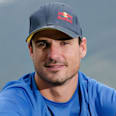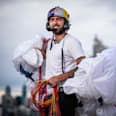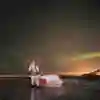
You may have heard of dancing fountains, but now it’s about dancing “with” fountains! Paragliding pros Horacio Llorens and Rafael Goberna had to push their own limits with this new flight in Dubai.
Horacio Llorens and Rafael Goberna teamed up to take part in an exclusive shoot to showcase the beautiful Palm Fountain at the Pointe, Palm Jumeirah in Dubai.
And as expected, the final outcome was a whole lot of fun, not to mention the capture of some spectacular content.
The flight didn’t just involve your typical paraglide. Llorens and Goberna donned special paramotors to take to the sky; gliding between the fountain’s jets of water that were so close they could feel them.
“All the projects have different approaches. Sometimes you get inspired by something spectacular; other times you get contacted about an amazing location where the potential is huge,” explains Llorens. “This was the case with The Pointe and Atlantis The Palm. When we went last December for the location check, and they showed us the area and the fountains, I said: ‘We have to make it happen, this is the best ever place for a night shoot project!’”
Launched in October 2020, The Palm Fountain has been recognised as the world’s largest, featuring two giant floating platforms covering 14,000 square metres of sea water. And reaching an impressive 105 metres, lighting up the Dubai sky with 3,000 LED lights, the fountain “dances” to hit songs from across the world, with daily shows taking place.
Five-time world champion and Infinity Tumbling Guinness World Record holder, Llorens, along with, Goberna, 26, had been discussing and practicing tricks and choreography for some time prior to arriving in Dubai. Once in the emirate, the duo – along with the entire project team – conducted trial runs in the Margham Desert in daylight for two days.
During the actual shoot we improvised
The athletes – along with a large team of specialists – drew up the plan for this unique flight. It definitely wasn't just a case of turning up and flying – there’s pre-event training, there’s engineering, there are multiple safety precautions, as well as intensive training sessions and practicing choreography.
“[During practice] we came up with 10 different moves we wanted to do, and during the actual shoot we improvised together as well. So it was a very fun and demanding process,” says Llorens.
Paragliding with a paramotor is a complicated process and requires skill, patience and very, very precise planning. Llorens tells us that each athlete was carrying about 50kg in weight.
“Paragliding and paramotoring are different sports. In paramotor, you need to be very careful as you have a propeller spinning super fast really close to you. But it opens a huge range of possibilities as you can climb pushing gas... in paragliding you can not climb when you want, just when the conditions help you to do it,” Llorens explains. “And of course, during the night the paramotor was the only option to make this happen on the way we wanted, and it was perfect.
“Depending on the quantity of gasoline you have in the tank, you can easily go above 30kg… in this case we were using LED lights, lasers, smoke, batteries... so we were holding around 50kg on our backs in each take off and landing.”
The athlete continues: “We were flying around three hours all together in consecutive flights of 45 minutes each. Night flying is confusing sometimes as you can not have a clear vision, but as we were working on direct communication with The Pointe fountain operators, we could play closer to the water streams and be part of this amazing show in a safe way.”











